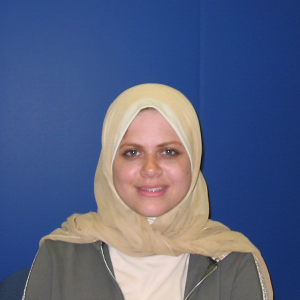
Researchers have been concerned that suburban sprawl could reinforce gendered mobility patterns and lead to gendered differences in mobility. Previous studies also argued that the effectiveness of land use policy could be influenced by men and women’s different mobility patterns in response to built environments. To address these concerns, this dissertation uses the 2010-2012 California Household Travel Survey data and directly compares the within-household gendered travel and spatial behaviors for households with paired heads living in Southern California. The study examines whether built environments, including destination accessibility, design and walkability have different impacts on male and female heads’ daily travel and activity space behaviors and whether potential urban design can help improve gendered inequality in daily mobility.
Based on negative binomial, Tobit, and generalized least squares regressions, the results show that that male and female heads respond to built environments with different travel and spatial behaviors. Living in walkable and accessible areas is likely to encourage male heads to walk, reduce their dependence on driving, locate activity center close to home, and have spatially concentrated activities. Female heads tend to respond to walkable and accessible living environments with reducing automobile travel and with centering and confining their activities near residential neighborhoods. The negative binomial, Tobit, and binary logit regression analyses that investigate the influences of built environments on gendered inequality indicate that high walkability and regional accessibility are likely to reduce the gendered inequality in motorized travel distance and relax female heads’ spatial (and temporal) constraints relative to their husbands.
This dissertation contributes to the policy debates by informing planners and feminist geographers that the effects of built environments can be heterogeneous even for men and women from similar backgrounds and compact design can be the key to gendered equity. Given that compact developments are being rapidly implemented in Southern California, this dissertation study is expected to help shape effective and efficient land use policies in the future.

An efficient transportation system requires adequate and well-maintained infrastructure to relieve congestion, reduce accidents, and promote economic competitiveness. However, there is a growing gap between public financial commitments and the cost of maintaining, let alone expanding, the U.S. road transportation infrastructure. Moreover, the tools used to evaluate transportation infrastructure investments are typically deterministic and rely on present value calculations, even though it is well-known that this approach is likely to result in sub-optimal decisions in the presence of uncertainty, which is pervasive in transportation infrastructure decisions. In this context, the purpose of this dissertation is to propose a framework based on real options and advanced numerical methods to make better road infrastructure decisions in the presence of demand uncertainty.
I first develop a real option framework to find the optimal investment timing, endogenous toll rate, and road capacity of a private inter-city highway under demand uncertainty. Traffic congestion is represented by a BPR function, competition with an existing road is captured by user equilibrium, and travel demand between the two cities follows a geometric Brownian motion with a reflecting upper barrier. I derive semi-analytical solutions for the investment threshold, the dynamic toll rates and the optimum capacity. Result shows the importance of modeling congestion and an upper demand barrier – features that are missing from previous studies.
I then extend this real options framework to study two additional ways of funding an inter-city highway project: with public funds or via a Public-Private Partnership (PPP). Using Monte Carlo simulation, I investigate the value of a non-compete clause for both a local government and for private firms involved in the PPP.
Since road infrastructure investments are rarely made in isolation, I also extend my real options framework to the Multi-period Continuous Network Design Problem (CNDP), to analyze the investment timing and capacity of multiple links under demand uncertainty. No algorithm is currently available to solve the multi-period CNDP under uncertainty in a reasonable time. I propose and test a new algorithm called “Approximate Least Square Monte Carlo simulation” that dramatically reduces the computing time to solve the CNDP while generating accurate solutions.

Trip chaining is a common phenomenon generally known as linking multiple activities and trips in one travel process. A good understanding about trip chaining complexity is important for travel demand model development and for transportation policy design. However, most of the existing studies on trip chaining limit the complexity classification scheme on number of trips chained and neglect other dimensions that also elevate the degree of complexity. The purpose of this study is to develop a new approach, Tour Complexity Index (TCI), that integrates the multi-dimensional nature of trip chaining into the complexity assessment.
The study contains three analysis components. The first component introduces the TCI approach as a trip chaining complexity measure that not only considers number of trips chained but also includes the spatial relationship across destinations, the route arrangement, and the urban environment of the destinations. By comparing descriptive statistics and generalized linear model results from TCI approach with those from traditional approach, we find that the TCI approach offers more information regarding trip chaining and mode choice. The application of TCI is further demonstrated in the following components. The second component investigates the intrapersonal daily and weekly travel variability with travel characterized by TCI and mode choice. The result reinforces an argument in current literature that the common single-day travel survey may produce biased estimation due to the day-to-day variance in travel behavior. Result also finds that proximity to a new transit service from place of residence is connected with a decline in variability. The third component explores a framework for travel pattern recognition where pattern is characterized by TCI as well. The discrepancy analysis which is a generalized analysis of variance (ANOVA) method is applied to associate individual characteristics with travel pattern. In addition, both components use Sequential Alignment Method (SAM) for travel pattern representation. The TCI approach and proposed analysis frameworks are validated using the longitudinal GPS trajectory data collected between 2011 and 2013 at west Los Angeles area for Expo Study.

Trucks contribute disproportionally to traffic congestion, emissions, road safety issues, and infrastructure and maintenance costs.
In addition, truck flow patterns are known to vary by season and time-of-day as trucks serve different industries and facilities.
Therefore, truck flow data are critical for transportation planning, freight modeling, and highway infrastructure design and
operations. However, the current data sources only provide partial truck flow or point observations. This dissertation developed a
framework for estimating path flows of trucks by tracking individual vehicles as they traverse detector stations over long distances.
Truck physical attributes and inductive waveform signatures were collected from advanced point detector systems and used to match
vehicles between detector locations by a Selective Weighted Bayesian Model (SWBM). The key feature variables that were the
most influential in distinguishing vehicles were identified and emphasized in the SWBM to efficiently and successfully track
vehicles across road networks.
The initial results showed that the Bayesian approach with the full integration of two complementary detector data types – advanced
inductive loop detectors and Weigh-in-Motion (WIM) sensors – could successfully track trucks over long distances (i.e., 26 miles)
by minimizing the impacts of measurement variations and errors from the detection systems. The network implementation of the
model demonstrated high coverage and accuracy, which affirmed the capability of the tracking approach to provide comprehensive
truck travel patterns in a complex network. Specifically, the model was able to successfully match 90 percent of multi-unit trucks
where only 67 percent of trucks observed at a downstream site passed an upstream detection site.
A strategic plan to identify optimal sensor locations to maximize benefits from the truck tracking model was also proposed. A
decision model that optimally locates sensors to capture the maximum truck OD and route flow was investigated using a goal
programming approach. This approach suggested optimal locations for tracking implementation in a large truck network considering
a limited budget. Results showed that sensor locations from a maximum-flow-capturing approach were more advantageous to
observe truck flow than a conventional sensor location approach that focuses on OD and route identifiability.

Disasters, specifically earthquakes, result in worldwide catastrophic losses annually. The first seventy-two hours are the most critical and so any reduction in response time is a much-needed contribution. This is especially true in cases where parts of the communication infrastructure are severely damaged. Traditional disaster relief logistics models tend to rely on the assumption that information flow is continuous throughout the system following the onset of a natural disaster. A new integrated framework for disaster relief logistics that optimizes the movement of critical information along with physical movements is proposed in order to alleviate post-disaster conditions in a more accurate and timely manner. The framework consists of an information network and a transportation network with interrelationships. The framework was applied to the Irvine Golden Triangle Network and the Knoxville Network for up to three different cases. The DYNASMART-P simulation program performance was compared against the Time Dependent Network Simplex paths approach combined with the information updating feedback loop. The average total travel times of vehicles travelling to the trauma center in the study areas were compared in order to quantify the improvements of the integrated solution framework. The results show a significant reduction of average total travel times for vehicles transporting injured patients to the trauma center.

Recent advances in communication technology coupled with increasing environmental concerns, road congestion, and the high cost of vehicle ownership have directed more attention to the opportunity cost of empty seats traveling throughout the transportation networks every day. Peer-to-peer (P2P) ridesharing is a good way of using the existing passenger-movement capacity on the vehicles, thereby addressing the concerns about the increasing demand for transportation that is too costly to ad-dress via infrastructural expansion.
This dissertation is dedicated to the optimization of the matching process between the partici-pants in a ridesharing system. More specifically, focus of this book is on multi-hop matching, in which riders have the possibility of transferring between vehicles. Different algorithms have been presented for various implementation strategies of ridesharing systems. Multiple case studies assess the important role ridesharing can play as a separate mode, or in conjunc-tion with other modes of transportation, in multi-modal settings.

Modeling capacity is an integral component towards traffic engineering objectives such as design of control strategies and evaluation of roadway improvement projects. Traffic dynamics at bottlenecks, both on freeways and on arterial networks, influenced by bounded acceleration and lane-changing, affect the capacity in intriguing ways. This research attempts to capture these impacts of the bounded acceleration behavior along with its interplay with lane-changing by constructing a modeling framework that accurately models traffic dynamics at bottlenecks.
First a modified Cell Transmission Model (CTM) is proposed, by substituting the traditionally constant demand function with a linearly decreasing function for congested traffic. Analytically the new model is shown to reproduce observed features in the discharge flow-rate and headway at signalized intersections. Calibration with headway observations further suggests that the model can reasonably capture all traffic queue discharge features. The solutions to the Riemann problem demonstrate that the modified CTM produces realistic results.
As a next step, the demand function is further modified by integrating macroscopic lane-changing effects on capacity, and a corresponding CTM, termed LCBA-CTM, is developed. The Lane Changing Bounded Acceleration CTM (LCBA-CTM) is shown to realistically model the capacity drop phenomenon and predict its magnitude at active freeway lane-drop bottlenecks in stationary states. Constant loading problems are analytically solved to reveal the onset and offset processes of capacity drop.
An addition to the framework connects microscopic acceleration profiles of vehicles to modified demand functions. This completes the framework presented by offering a mechanism to start with any acceleration model.
Finally, two applications of the modified CTM are presented. First, the framework is used to evaluate impacts of technological improvements such as autonomous vehicles on traffic dynamics at signalized intersections. In the second, the framework is used to create accurate Macroscopic Fundamental Diagrams for arterial networks.
This dissertation offers a systematic approach to incorporating bounded acceleration and lane-changing into the CTM demand functions. Such an approach is shown to capture important static and dynamic features at critical bottlenecks, including lost time and queue discharge features at signalized intersections, and capacity drop magnitude and the onset and offset of capacity drop at active freeway bottlenecks. Due to its ability to model impacts of bounded acceleration and lane-changing on macroscopic traffic statics and dynamics, this new model can be applied to design and evaluate new control and management strategies.

During the last two decades, a large body of empirical research has focused on the relationship between land use and travel behavior, and also on the impacts of transportation accessibility on land value. However, significant gaps remain in our understanding of these relationships. In this dissertation, I present three essays on accessibility, carless households, and long-distance travel that will enhance our understandings of the relationships between land use, land value, and transportation.
In my first essay, I provide empirical evidence about the magnitude of the value of transportation accessibility as reflected by residential rents in Rajshahi City, Bangladesh. Results of my SARAR (spatial autoregressive model with spatial-autoregressive disturbances) model show a small but statistically significant capitalization of accessibility. Results of this study should be useful for planning transportation infrastructure funding measures in least developed country cities like Rajshahi City.
In my second essay, I assess the joint effects of various socio-economic, residential, and land use variables on the likelihood that a household is carless, voluntarily or not, by analyzing data from the 2012 California Household Travel Survey (CHTS). Results of my binary logit models show the importance of land use diversity and of good transit service to help households voluntarily forgo their vehicles, and downplay the impact of population density and pedestrian-friendly facilities. Results of this study should help planners and policy makers formulate policies to curb automobile dependency and help promote sustainable urban transportation.
My third essay analyzes long-distance data from the 2012 CHTS to understand the influence of different socio-economic, land use, and land value variables on the likelihood that a household commutes long-distance in California. Results of my Generalized Structural Equation Model (GSEM) show that long-distance commuting is negatively associated with mixed density and residential home values (around commuters’ residences), but positively related with households’ car-ownership. My results also confirm the presence of residential self-selection. The empirical evidence of this study should help formulate land use planning strategies to curb long-distance commuting and thus help reducing vehicle-miles traveled, which is one way of reducing the emission of greenhouse gases from transportation.

The purpose of this study is to develop a traffic estimation framework which combines different data sources to better reconstruct the traffic states on the freeways. The framework combines both traffic parameter and state estimation in the same work flow, which resolves the inconsistency issue of most existing traffic state estimation methods.
To examine the quality of the traffic sensor data, the study starts with proposing the network sensor health problem (NSHP). The optimal set of sensors is selected from all sensors such that the violation of flow conservation is minimized. The health index for individual detector is then calculated based on the solutions. We also developed a tailored greedy search algorithm to find the solutions effectively. The proposed method is tested using the loop detector data from PeMS on a stretch of the SR-91 freeway. We compared the results with PeMS health status and found considerable level of consistency.
Two different traffic state estimation methods are proposed based on the data availability and traffic states. The LoopReid method is derived from the Newell’s simplified kinematic wave model by assuming the whole road segment is fully congested. We formulate a least square optimization problem to find the initial states and traffic parameters based on the first-in-first-out principle and the congested part of the Newell’s model. While developing the LoopCT method, we derived a counterpart of the Newell’s kinematic wave model in the Lagrangian coordinates under Eulerian boundary conditions. This model also leads to a new method to estimate vehicle trajectories within a road segment. We formulate a least square optimization problem in initial states and traffic parameters which works for mixed traffic states. The two estimation methods turned out to be highly related and the LoopCT method degenerates to the LoopReid method when the traffic is fully congested. The two methods are validated using two datasets from the NGSIM project. Both methods achieved considerable level of accuracy at reconstructing the traffic states and parameters.

Shared-use mobility systems, which enable users to have short-term access to transportation modes on an on-demand basis, have experienced tremendous growth over the last decade. However, most of the existing systems suffer from two co-founding issues: the lack of modeling tools to understand, simulate and predict their behavior and the lack of integration with the existing transit network. To address those issues, this dissertation focuses on investigating the operational challenges of bikesharing systems, with an emphasis on the rebalancing operations and the modeling of a new mobility concept, Car2work, which builds upon existing carsharing ideas and successfully integrates with existing transit networks. A methodological framework to solve the bikesharing rebalancing problem is proposed. The novelties of the approach are that it is proactive instead of reactive, as the bike redistribution occurs before inefficiencies are observed, and uses the outputs of a demand-forecasting technique to decompose the inventory and the routing problem. The decomposition makes the problem scalable, responsive to operator inputs, and able to accommodate user-specific models. Simulation results based on data from the Hubway bikesharing system show that system performance improvements of 7% in the afternoon peak could be achieved.
Car2work main goal is to connect commuters with workplaces while leveraging the line-haul capabilities of existing public transit systems and guaranteeing a trip back home, efficiently tackling the “last mile” problem that is a limiting characteristic of public transit. It differs from the traditional dynamic-ridesharing approaches because it is designed for recurrent commuting trips where commuters announce their (multiple) trips in advanced and an automated all-or-nothing matching strategy is performed, guaranteeing a ride home. The problem is formulated as a pure binary problem that is solved using an aggregation/disaggregation algorithm that renders optimal solutions. The solution approach is based on decomposing the problem into a master problem and a sub-problem, reducing the number of decision variables and constraints. As a result, various instances of the problem can be solved in reasonable amount of time, even when considering the transit network. The model could be used to simulate a large-scale implementation of the concept.









